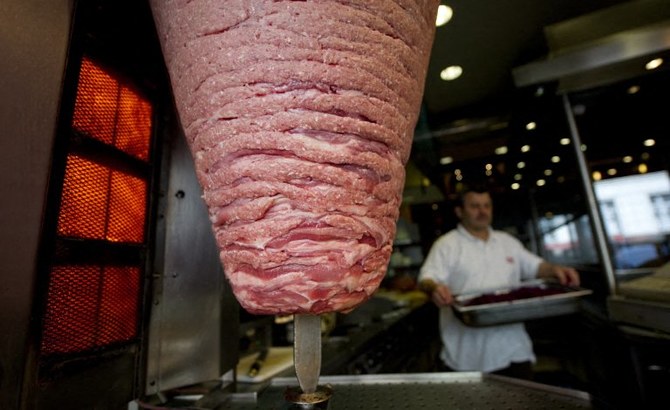Clouds of smoke billow from the chimneys at a Chinese chemical plant rumbling with activity, more than a year after authorities closed it following protests by thousands of people.
The factory in Dalian was ordered to halt work and relocate 17 months ago after local residents took to the streets, fearing a toxic chemical spill that might poison them and their children.
But now it appears to be functioning, although at what capacity is unclear.
The apparent U-turn raises questions about how China’s communist rulers, ever fearful of social unrest, can deal with its pollution problem while also retaining the manufacturing operations that have powered economic growth.
Across China public frustration mounted this week as dense smog blanketed swathes of the country, with even state-run media questioning the authorities’ ability to meet their goal of building a “beautiful China.”
The darkened skies prompted premier-to-be Li Keqiang to call for stricter enforcement of environmental protections — but failing to fulfil even simpler promises such as shutting the plant in Dalian could further prime popular anger.
“They have no intention of moving” regardless of company and government promises, said a local resident surnamed Zhao, 31, who said he worked near the plant until eight months ago.
“They have never even stopped operating,” he said, expressing a distrust in the local government echoed by other residents.
Zhao said he switched jobs to escape the “nose-stinging” stench in the area — a sprawling industrial zone with mammoth pipes and storage towers that churns out everything from ship parts to electricity. “The smell there was too much. Working there long-term was not good for one’s health,” Zhao said, adding that he still suffers from a nagging cough.
About 12,000 people demonstrated in the center of the northeastern city in August 2011 after waves from an approaching storm breached the seaside plant’s protective dyke, forcing residents to be evacuated and raising fears of a toxic spill.
The factory produced paraxylene, or PX, a flammable carcinogenic liquid used to make polyester films and fabrics.
Authorities pledged to shut the plant and move it to a remote location, while the company, Dalian Fujia Dahua Petrochemical, agreed to “immediately carry out work to stop the PX project,” the Dalian Daily reported at the time.
But a local government official later told media the factory had resumed operations after meeting certain standards.
Others reached by AFP declined to comment, saying only that relocation plans were in the works, while three company employees refused to confirm or deny whether production was continuing.
Tang Zailin, the head of a local environmental group, said his members were watching to see if authorities would eventually move the plant.
He urged them to take seriously a call by President Hu Jintao in a key speech in November to build a more “beautiful China.”
“’Beautiful’ has to include a nice environment, right?” Tang said.
Since July mass protests in at least three cities — some with violent incidents — have forced industrial projects to be canceled. In the eastern city of Ningbo, residents said they doubted authorities would keep their word.
In November the environment minister Zhou Shengxian promised that all major future projects would undergo “social impact assessments.”
Such studies might help avoid protest, said environmental lawyer Wang Canfa, but ultimately factories should be opened or shut based on written codes rather than public duress — which could unfairly punish companies in compliance.
“The key is whether or not they meet the requirements of the law,” said Wang, who runs a legal aid center in Beijing for pollution victims.
“This approach of promising to stop work and then restarting after people stop making a fuss, without giving the public any explanation or information — the biggest victim will be the government’s credibility,” he said.
“The next time they say something, the people will not believe them.”






















